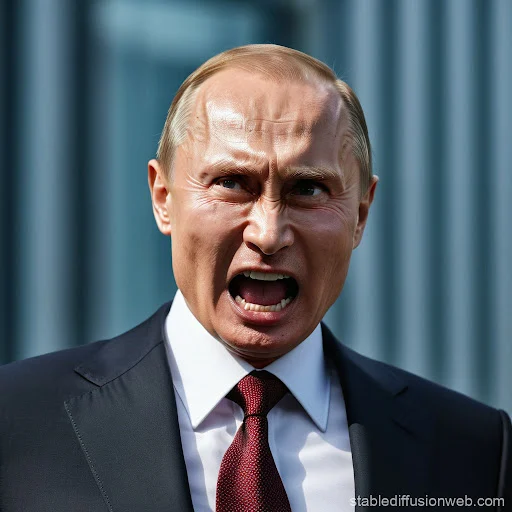By Ephraim Agbo
On July 14, 2025, Donald Trump lit a geopolitical fuse: Vladimir Putin has 50 days to agree to peace in Ukraine—or face global economic isolation via sweeping 100% tariffs on any country still trading with Russia.
It was vintage Trump: clear, bold, and brash.
But behind the optics of strength lies a dangerous gamble. Because if Putin doesn’t blink — and all signs suggest he won’t — this threat could implode on Trump, fracture America’s alliances, and trigger an economic backlash with generational consequences.
Here’s why this “deal-or-detonate” diplomacy could blow up spectacularly.
🧠 1. Putin’s Psychology: The Autocrat Who Doesn’t Yield
Let’s start with the man at the center of it all.
Vladimir Putin has survived:
- 24 years in power,
- 5 major Western sanction waves,
- and a full-scale invasion gone wrong—and he's still standing.
The Kremlin’s doctrine is clear: concessions = weakness.
🪖 Historical trend:
- 2014: After Crimea’s annexation, Putin ignored sanctions, tightened control, and his approval rating soared to 86%.
- 2022–2024: Despite losing 160,000+ troops in Ukraine (according to U.K. MoD estimates), Russia doubled down militarily and economically rerouted through Asia.
So if Trump thinks Putin will fold from economic pain? History says he’ll bite down and push harder.
“Putin would rather burn down bridges than walk away first.” – Fiona Hill, former White House Russia advisor
🌐 2. America’s Global Standing: At Risk of Erosion
Trump's threat isn’t aimed only at Russia—it targets its trade partners. And that’s where the blowback starts.
💡 The top buyers of Russian goods in 2025:
- China: $127 billion
- India: $61 billion
- UAE: $12 billion
- Brazil: $9.8 billion
- Turkey: $6.2 billion
Now imagine 100% tariffs slapped on their imports. They won’t smile and accept it.
- India could retaliate by halting defense purchases from the U.S. (worth $6.5B annually).
- China might fast-track a retaliatory tax on U.S. tech firms, potentially hitting Apple, Tesla, and Intel exports.
- Turkey could threaten to exit NATO cooperation—it already opposes most sanctions on Russia.
And the EU? While aligned on paper, Germany and Hungary remain heavily dependent on Russian gas substitutes. Full compliance isn’t guaranteed.
The risk? America may find itself diplomatically isolated, its “coalition of the willing” fractured by economic self-interest.
📉 3. Economic Blowback: Tariffs Cut Both Ways
Trump’s plan rests on a big bet: economic pressure equals submission. But in reality, tariffs are a boomerang, especially in an interconnected global economy.
⚙️ Global exposure to Russian-linked supply chains:
- 27% of global fertilizer exports come from Russia and Belarus.
- Russia supplies 10% of the world’s aluminum and 6% of its oil.
- Roughly 17% of Europe’s diesel comes through secondary Russian routes via India and the UAE.
Tariffs on nations trading with Russia would:
- Spike food prices across Africa and Latin America.
- Inflate manufacturing costs in the U.S. and Europe.
- Disrupt critical minerals for EVs, aircraft, and semiconductors.
"This isn’t 1945. You can’t squeeze one country without hitting ten others along the supply chain." — Zanny Minton Beddoes, The Economist
Result? Consumers pay the price. Markets recoil. Allies hesitate.
🧨 4. Putin’s Counterpunch: Escalation, Not Retreat
Cornered leaders don't surrender. They lash out.
If Putin sees Trump's ultimatum as an existential threat, expect retaliation far beyond trade.
Potential escalation vectors:
- Cyberattacks: In 2024 alone, Russia-linked groups disrupted over 170 hospital and power grid systems in NATO countries.
- Energy sabotage: A Nord Stream-style attack on infrastructure could spike oil to $140/barrel.
- Hybrid warfare: Disinformation, proxy insurgencies, or direct weapons shipments to U.S. rivals like Iran or Venezuela.
And the nuclear question? Always unspoken, but never off the table.
“The greater the humiliation, the higher the risk of irrational escalation.” – Gen. Wesley Clark, former NATO Supreme Commander
Bottom line: Trump’s threat could trigger war in ways no one wants.
🕳️ 5. The Trapdoor of Deadlines
Deadlines make for great headlines — but dangerous diplomacy.
What happens if Day 50 comes and goes, and Putin hasn’t caved?
Trump then faces a no-win choice:
- Enforce the tariffs and start a global economic crisis,
- or walk them back, signaling weakness.
Either path risks credibility collapse. Worse still, Putin could exploit it by offering “fake peace”—half-promises, phony ceasefires, and meaningless negotiations just to force hesitation in Washington.
That’s not diplomacy. That’s a trap.
🧭 6. And What If It Works? Even Then, the Message Is Dangerous
Let’s imagine the threat “works” and Putin surrenders to avoid tariffs. What precedent does that set?
That economic blackmail—not dialogue, not diplomacy—wins.
It tells the world:
- “Get nuclear weapons, be aggressive, hold out — and maybe someone will pay you to stop.”
- It may embolden North Korea, Iran, and even China over Taiwan to provoke crisis-level standoffs, knowing ultimatums will come next.
And just like that, America becomes both world policeman and economic enforcer—while losing its reputation as a broker of peace.
🧨 Final Thought: Strongman Diplomacy Has No Reset Button
Trump’s threat is dramatic and, to some, overdue.
But behind the swagger lies a fragile reality:
Ultimatums can’t be half-kept. And enemies don’t always play the part written for them.
In trying to corner Putin, Trump may have cornered himself — into a game where peace, power, and prosperity are all on the line.
If the threat fails, America doesn’t just lose influence. It loses control of the narrative—and potentially, the world order it helped create.












No comments:
Post a Comment